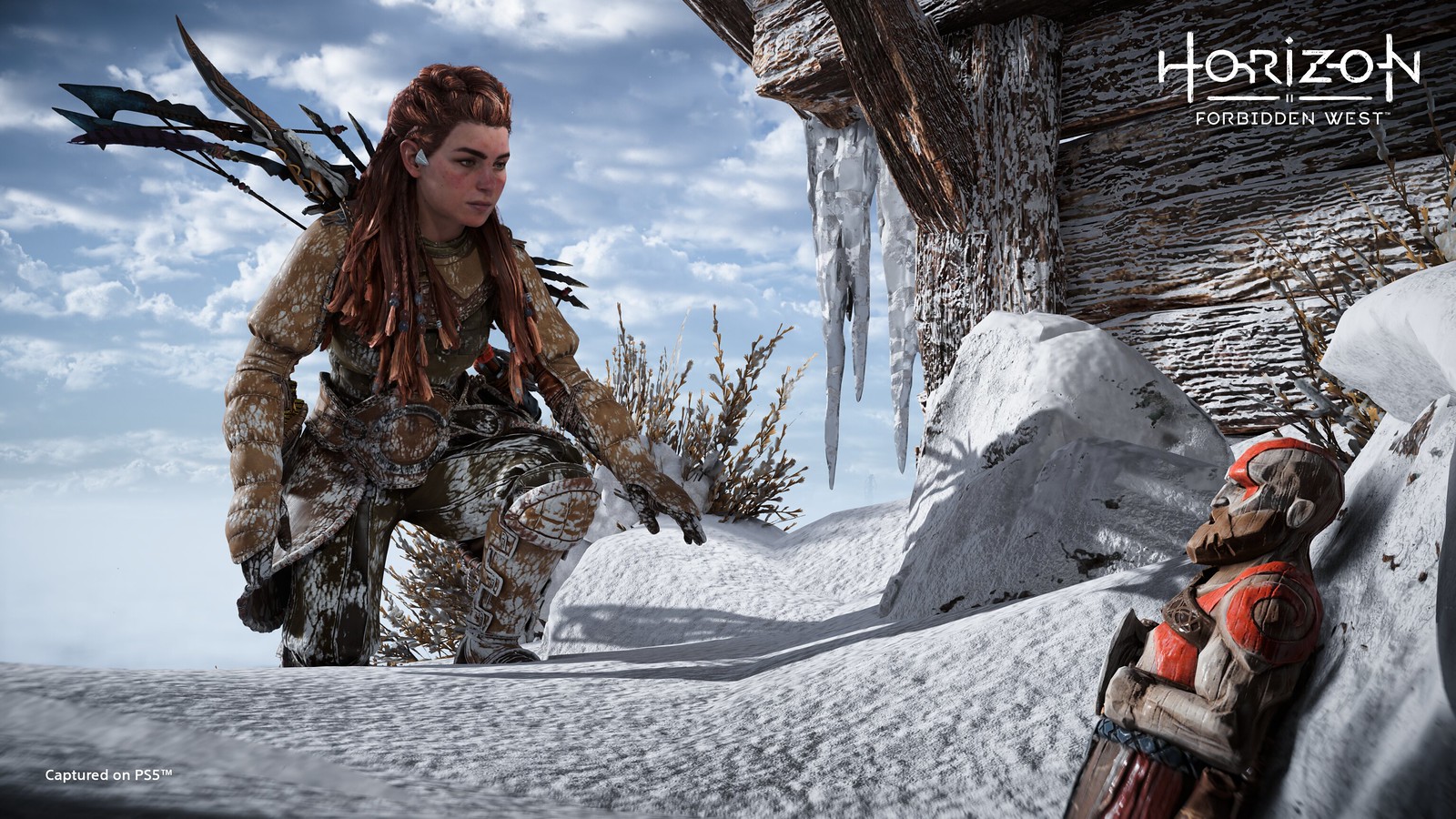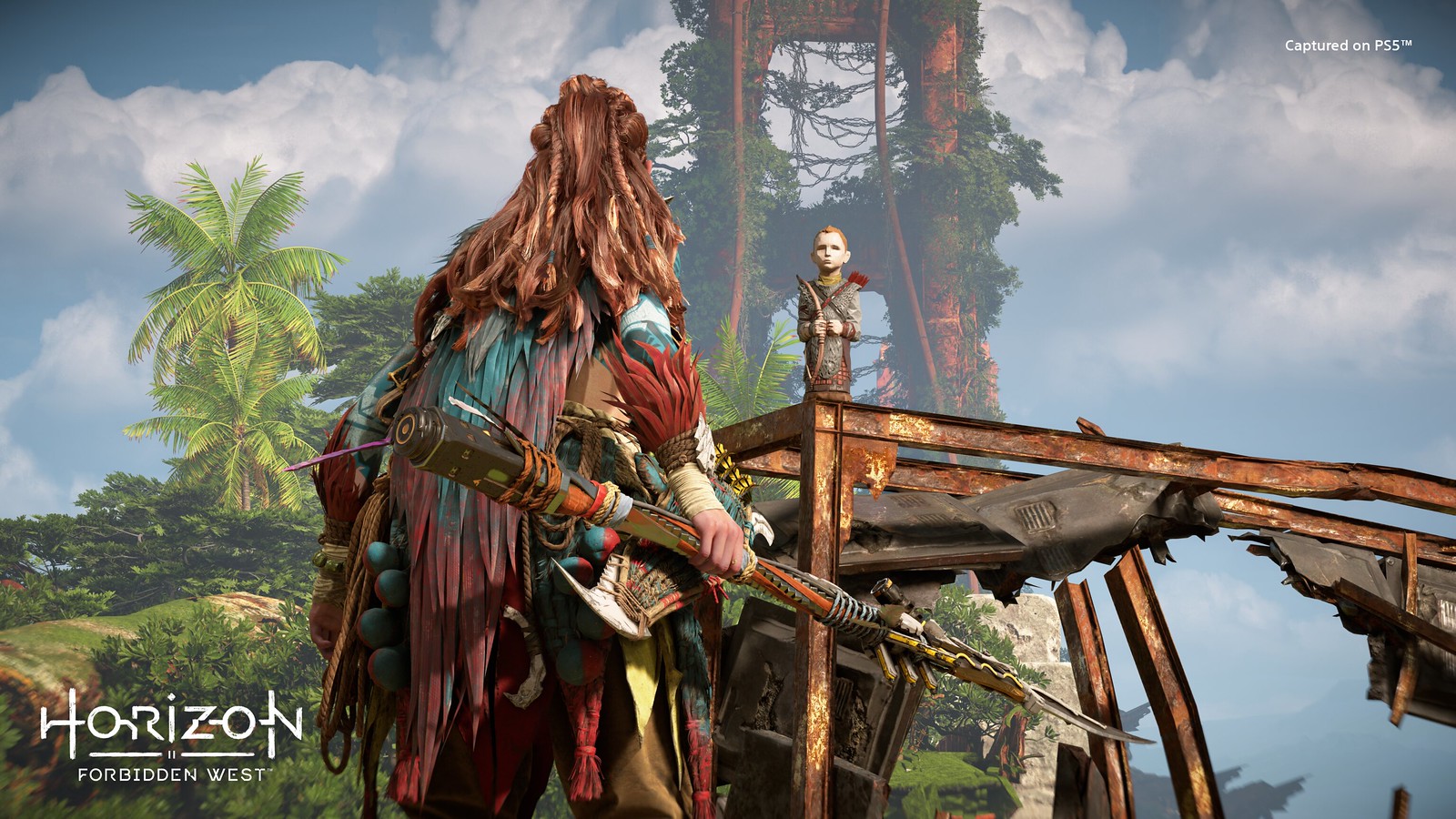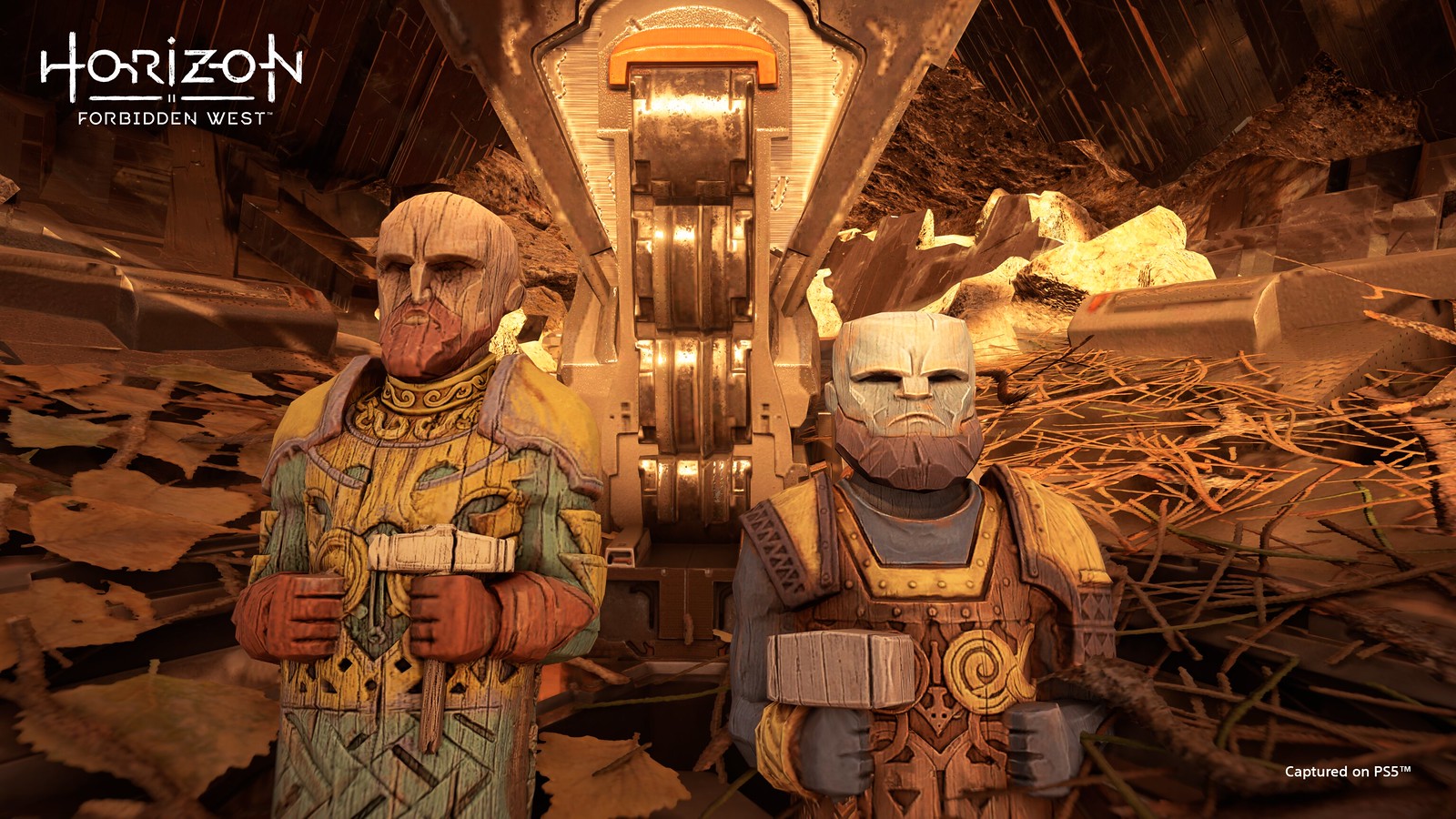The world of Horizon Forbidden West is grand in scale, but as you explore, you’ll uncover many smaller secrets buried throughout its landscapes. Some of the most unexpected discoveries are three mysterious relics referencing Midgard, the mythical realm featured in a certain Norse action-adventure game from Santa Monica Studios.
At Guerrilla, we love to collaborate with and nod to our fellow PlayStation Studios. That’s why, hidden throughout the Forbidden West, these special War Totems pay homage to key characters.
The world of Horizon Forbidden West is grand in scale, but as you explore, you’ll uncover many smaller secrets buried throughout its landscapes. Some of the most unexpected discoveries are three mysterious relics referencing Midgard, the mythical realm featured in a certain Norse action-adventure game from Santa Monica Studio.
By finding all three of these carved wooden figures, you’ll unlock access to a unique cosmetic bonus for Aloy: the legendary Mark of War face paint worn by Kratos himself.
Every one of these collectibles was placed in the world with careful consideration by our development team. While we’ll leave it to you to find their exact locations, we hope this peek behind the scenes will give you an idea of where to begin your search.
We begin with an homage to Kratos’ iconic weapon, the Leviathan Axe. Off a beaten path, Aloy can find the fearsome battleaxe buried in a tree. Scanning it with her Focus reveals a trail to an abandoned cabin, mirroring Kratos’ home. Within, the small Totem of War bears Kratos’ likeness.

The Totem of Youth is close to an iconic landmark. As you approach, you will discover it is defended fiercely by a machine that holds a likeness to the creature that watches over Helheim, a specific reference to Atreus.

Finally, the Totem of Brotherhood is found in a Cauldron-like structure on an island, reminiscent of one of the locations of Brok and Sindri’s forge. We chose this location because the Huldra Brothers are a Norse equivalent to the Greek god Hephaestus (the namesake of Horizon Forbidden West’s machine-forging AI).

“We wanted these to be standalone, hidden easter eggs, which were intentionally more difficult to fi